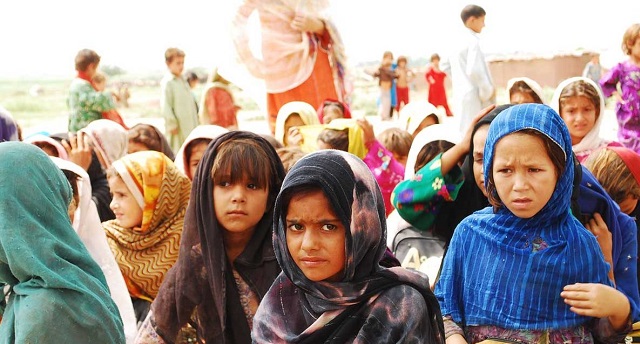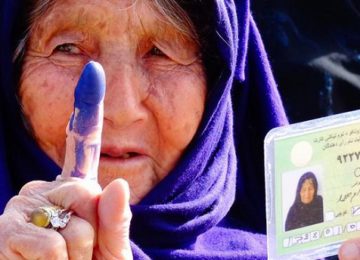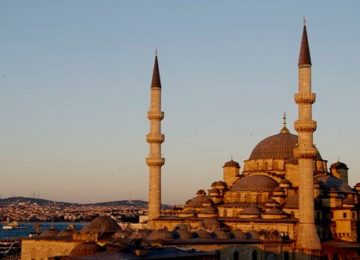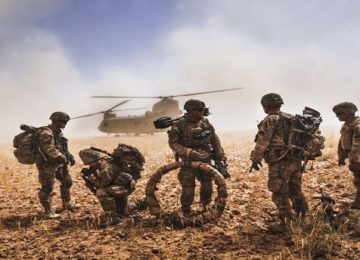June 20, 2019
Forty years ago, Afghan refugees began streaming into Pakistan, driven there by the abuses of the communist-led regime. More than 400,000 had arrived by the time of the Soviet invasion on Christmas Eve in 1979. By the end of the following year, the numbers had swelled to more than four million — making Pakistan the largest host of refugees in the world.
That number has dwindled sharply over recent years. In the wake of the horrific school massacre at the Army Public School in Peshawar, Pakistan’s authorities initiated a crackdown that subjected these refugees to harassment and surveillance. They were punished for the actions of the armed group responsible, which had links to Afghanistan, and demonised variously as ‘criminals’, ‘terrorists’ and ‘anti-Pakistani’.
Perhaps the most iconic Afghan refugee is Sharbat Gula, the so-called ‘Afghan girl’, who featured on a 1985 cover of National Geographic. Her unflinching stare seared into popular consciousness the plight of a conflict-affected population that was forced to abandon their lives to seek sanctuary in a refugee camp near Peshawar.
For decades, the Steve McCurry photograph was a reminder of Pakistan’s generosity. Over that time, many Afghans were able to return to their homes and resume their lives — until a fresh eruption of conflict displaced them once again. By some estimates, one in four Afghans have at some point in their lives been driven out of their homes by conflict.
In 2016, Sharbat Gula was arrested for allegedly possessing a false identity card and swiftly deported to Afghanistan. She was suddenly forced to leave behind a life of 25 years, during which she had gotten married, raised children and became part of a community. Sharbat Gula was one of more than 600,000 people expelled to Afghanistan in 2016, in what Human Rights Watch described as the “world’s largest unlawful mass forced return of refugees in recent times”.
In violation of international law, they were sent to face a situation even more dangerous than the one they first fled. For many of them, Afghanistan is a country they have never known. In total, more than a million people were forcibly returned to Afghanistan in 2016 — from Europe, Iran, Pakistan and elsewhere. The returns exacerbated the local humanitarian situation.
The situation has not improved. Last year marked the highest number of civilian deaths, including the highest number of deaths of children. There is no part of the country that can plausibly be considered safe. And yet, many countries persist with a policy of cruel indifference towards Afghans.
In July 2018, the German interior minister cheerfully hailed the fact that he was sending 69 Afghans home on his 69th birthday. One of those Afghans took his own life upon arrival. Horst Seehofer, however, is persisting with his tasteless ways and reiterated his threat earlier this month to expel the remaining Afghans whose asylum claims have been rejected.
In recent years, traditional champions of refugee rights have abandoned those commitments. We have seen the cruel treatment Australia metes out to desperate people in offshore detention centres on Nauru and Manus Island. Xenophobic European leaders now proudly campaign on platforms that call for the expulsion of refugees.
There is now an opportunity for countries like Pakistan — who host the bulk of the world’s refugees — to show leadership and demand the international community lives up to its responsibilities. Pakistan can put a halt to the returns, provide a humane solution, and earn recognition for its role as a host country. The international community can play a role by sharing the burden, supporting not just refugees but also the host communities.
Prime Minister Imran Khan came close to demonstrating that leadership last year when he said refugees should be given citizenship — something that is a legal right for those born in Pakistan. The announcement marked a welcome break from the dismal history of using Afghan refugees as a political tool in cross-border disputes. Alas, the proposal was withdrawn.
What can mark a strong first step towards restoring dignity to these refugees is an alternative proposal to issue short-term visas. This would allow Afghans to work formally, giving them legal recognition for their integral role in local economies. It would allow them to put their children in schools and open bank accounts. It would relieve them of the constant fear of imminent deportation.
At a time when Pakistan is looking to contribute to peace efforts in Afghanistan, there is little to lose. This is a chance to not just honour the past 40 years, but set an example for the rest of the world. By doing so, Pakistan can confidently say to the rest of the world that it played its part, that it did more than they did — that instead of abandoning refugees, they chose to give them homes.








